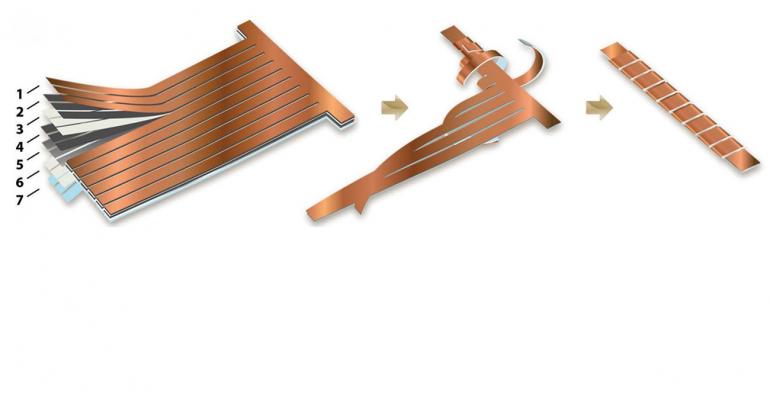The Vertebrate Battery “Prof. Yuan Yang of the engineering school at Columbia University (New York) modeled, designed, built, and fully evaluated a configuration that emulates the spine of vertebrates, while providing 85% of the energy density of a prismatic Li-ion cell with equivalent volume.” According to Power Electronics.com. Professor Yang’s 14-member team, working in the impressively-named Center for Precision Assembly of Superstratic and Superatomic Solids, and inspired by the flexibility of the human spine and its ability to repeatedly endure bending and twisting, designed a battery that emulates the characteristics of what is in essence a structural battery. We know from experience that our backbones can perform some pretty extraordinary twists and turns – witness the supple routines of gymnasts and Cirque de Soleil performers. Our spines are not rigid assemblies, but a complex construction of solid parts (vertebrae), flexible bits between the vertebrae (disks), and a network of wiring (nerves), which transmit signals from our organs and extremities to …
Making Graphene and Carbon Fibers Even Lighter and Stronger
While scientists at Columbia University have used chemical vapor deposition (CVD) to create large sheets of stronger-than-average graphene, a research team at Massachusetts Institute of Technology (MIT) has found ways to weave stronger carbon nanotubes. James Hone and Jeffrey Kysar, professors of mechanical engineering at Columbia University, learned that the enormous strength of graphene is usually achieved in only small patches. The “grain boundaries” for larger sheets were often far weaker than the theoretical strengths of which the material is capable. That strength is phenomenal. Hone explains, “It would take an elephant, balanced on a pencil, to break through a sheet of graphene the thickness of Saran Wrap.” Results of their study were published in the journal Science. The paper’s lead author, Gwan-Hyoung Lee, a postdoctoral fellow in the Hone lab, says, “Our findings clearly correct the mistaken consensus that grain boundaries of graphene are weak. This is great news because graphene offers such a plethora of opportunities both for …

